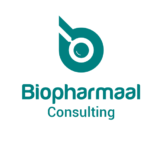The integration of digital technologies has become not just beneficial, but essential in today’s ever evolving world. Among these, electronic informed consent (eConsent) platforms are gaining significant traction—especially in General Practice (GP) research settings, where flexibility, patient-centricity, and regulatory compliance are paramount.
What is eConsent?
eConsent refers to the use of electronic systems and processes approved by Research Ethics Committees (REC) to convey study information, obtain and document informed consent from participants. It can include multimedia elements like videos, graphics, interactive questions, and digital signatures to improve patient comprehension and engagement. Unlike static forms, eConsent fosters dynamic participant-researcher interaction, ensuring comprehension and transparency.
Why eConsent in GP Research?
GP sites offer a unique opportunity for decentralised clinical research due to their accessibility and trusted relationships with patients. However, traditional paper-based consent processes can be time-consuming and logistically challenging.
Benefits of eConsent for GP research sites include:
- Improved Patient Understanding: Interactive elements allow patients to better understand their rights, time commitments, the study design, and potential risks/benefits.
- Enhanced Recruitment & Retention: Easier, remote access to consent documents can facilitate participation and improve retention rate.
- Regulatory Compliance: eConsent systems are built to align with GDPR, GCP, and MHRA requirements, with built-in audit trails and version control.
- Efficiency & Scalability: Automated tracking, real-time updates, and centralised data storage save valuable time and reduce human error.
- Accessibility & Inclusivity: Cloud-based platforms allow participants to review consent materials remotely via smartphones or tablets, crucial for elderly or rural populations common in GP settings.
- Operational Efficiency: Eliminate paperwork, reduce administrative burdens, and accelerate startup timelines. GPs can redirect saved time toward patient care and data collection.
Challenges in Implementation
- Digital Literacy Barriers: Older participants may struggle with technology. Solutions include hybrid models (offering paper alternatives) and on-site tech support.
- Data Security Concerns: Partner with eConsent providers offering robust encryption and compliance certifications to build trust.
- Integration with GP Workflows: Ensure compatibility with existing EHR systems to avoid duplication. APIs and customisable platforms are key.
- Cost Considerations: Smaller practices may face budget constraints. Highlight ROI through long-term efficiency gains and scalable pricing models.
- Regulatory Variability: Tailor platforms to regional requirements. Early collaboration with ethics committees ensures alignment.
Key Considerations for Implementation
Implementing an eConsent platform in a GP setting requires careful planning and strategic alignment with both practice and sponsor expectations. Here are the critical steps:
1. Choose the Right Platform
Select a system that is MHRA and GDPR-compliant, offers customisation, and can integrate with existing EHR systems if possible. Prioritize user-friendly design, multilingual support, and compliance features. Pilot testing with GP staff and patients can identify gaps. Platforms such as Medidata eConsent, Signant Health, and Castor are widely recognised in the industry.
2. Stakeholder Engagement & Training
Training GPs (Investigators), nurses, and research staff is essential to ensure they understand the system’s functionality, security protocols, and how to assist participants effectively. Address resistance through workshops and success stories. Incorporate process for eConsenting in Standard Operating Procedure (SOP) for consenting
3. Patient Education
Patients must be reassured of data privacy and supported in using the platform. Clear instructions, helpdesks, or even in-practice demos can significantly boost engagement.
4. Regulatory & Ethical Approval
Early engagement with RECs ensures that the proposed eConsent process meets all legal and ethical standards.
5. Hybrid Consent Models
Offer paper-based options as a transitional strategy while promoting digital adoption.
6. Continuous Feedback Loops
Gather input from participants and staff post-implementation to refine processes.
In conclusion, eConsent is not just a digital upgrade—it is a strategic enabler of modern, patient-centric clinical research in primary care. With the right support, GPs can confidently adopt this innovation, improving research quality and participant experience.
Biopharmaal Consulting is here to guide your practice into the future of research—secure, compliant, and digitally enabled.
Contact us today to learn how we can help your GP site implement eConsent platforms and become a valued research partner.
